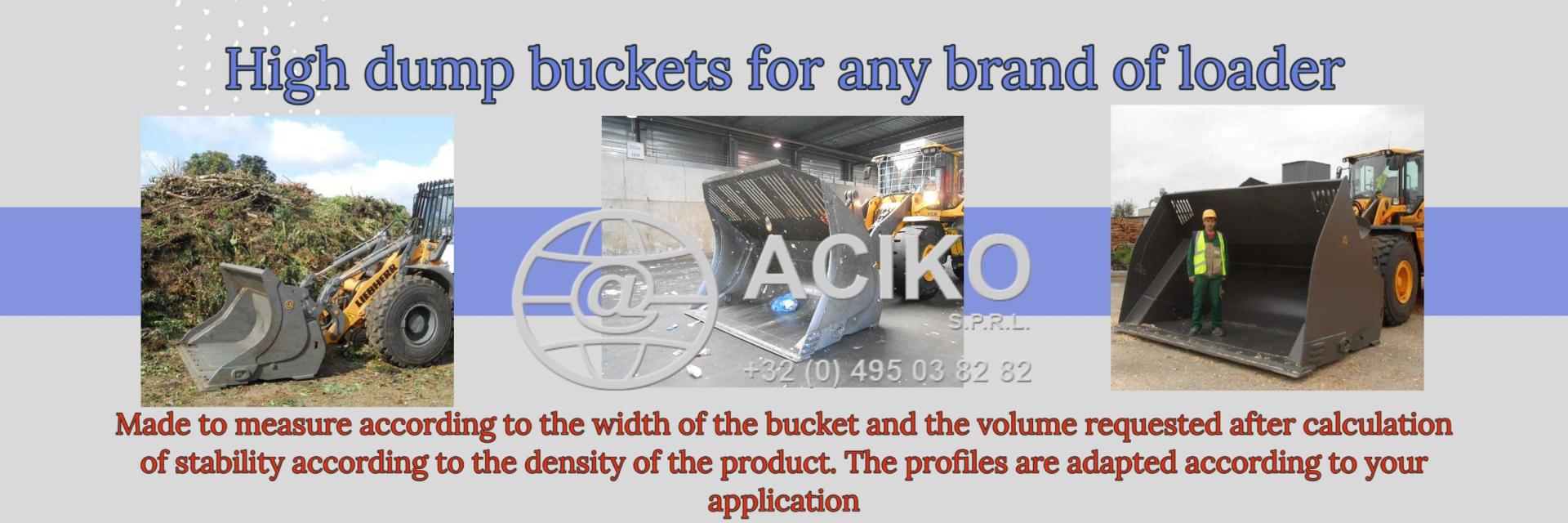R.E.News International-Virginia's CBBT Expansion Progress
 07/07/25-FR-English-NL-footer
07/07/25-FR-English-NL-footer
Progrès de l'extension du pont-tunnel de la baie de Chesapeake en Virginie

 Chesapeake Bay Bridge-Tunnel photo
Chesapeake Bay Bridge-Tunnel photo
Les équipes de construction en Virginie continuent d'avancer sur le projet d'extension du pont-tunnel de la baie de Chesapeake (CBBT), d'un coût de 756 millions de dollars, dont l'achèvement est prévu pour 2028. Le projet comprend un nouveau tunnel à deux voies reliant l'île la plus au sud, sous le chenal Thimble Shoal, à l'île suivante, offrant ainsi une nouvelle voie aux automobilistes traversant la baie de Chesapeake.
Les ouvriers ont franchi une étape importante en janvier, lorsque le tunnelier a percé le puits de réception de Two Island, dans le chenal Thimble Shoal.
« Le tunnel parallèle est un élément clé pour améliorer la sécurité et l'efficacité de cette liaison de transport vitale », a déclaré Fred Stant, président de la Commission CBBT. « Il démontre l'engagement de la Commission CBBT à faire progresser les infrastructures et à assurer la durabilité à long terme du pont-tunnel de la baie de Chesapeake.»
Une fois le forage du nouveau tunnel à deux voies terminé, la Chesapeake Tunnel Joint Venture (CTJV) a commencé la finition du nouveau tube. L'équipe est composée de Dragados USA et de Schiavone Construction Company LLC.
Lors de tout projet de construction de tunnel, le risque majeur réside dans la rencontre d'obstacles souterrains inattendus. Les équipes n'ont pas à s'inquiéter à ce stade, mais cela n'a pas toujours été le cas.
En mai 2023, le « Chessie » (le tunnelier) a heurté l'ancre d'un grand navire. L'ancre avait été fabriquée en Angleterre au début du XXe siècle. Il a fallu dix mois de travaux supplémentaires aux équipes pour retirer l'obstacle en toute sécurité et réparer les dommages causés au tunnelier. Le creusement a repris un an plus tard, à une vitesse moyenne de 15 mètres par jour.
La structure traversée par le tunnelier lors du percement est appelée mur de tête, d'une épaisseur de 1,5 mètre. Il a fallu plusieurs heures au tunnelier pour ronger le béton qui le compose. De plus, le matériau de renforcement utilisé à l'endroit de la percée est du plastique renforcé de fibres de verre, ce qui permet au tunnelier de percer sans risque de dommages importants lors du percement.
Des entretoises et des poutres d'acier temporaires ont été utilisées pour renforcer le mur de tête du puits de réception. Une fois la première percée réalisée par le tunnelier, elles ont été retirées pour permettre au tunnelier de terminer sa sortie. Cette opération, ainsi que l'enlèvement des débris de percée, a été réalisée en moins de 48 heures.
Jeff Holland, directeur exécutif du CBBT, a souligné que cette percée était l'aboutissement d'une planification approfondie, d'une ingénierie de précision et de travaux de construction complexes, réalisés durant les phases planifiées et imprévues du creusement du tunnel.
« Nous félicitons tout particulièrement les équipes de travail qui ont travaillé dans un environnement à haut risque pour retirer l'obstruction d'ancrage sans blessure ni perte de vie. Cette prouesse technique marque une avancée majeure dans l'amélioration de la sécurité, de la connectivité et des infrastructures pour les nombreux usagers du CBBT. »
Le nouveau tunnel sera doté de dispositifs de sécurité tels que des détecteurs de chaleur, un système d'extinction et des ventilateurs pour évacuer la fumée en cas d'incendie. Il disposera également d'un couloir de sortie sur toute la longueur offrant un accès pour la maintenance et un refuge en cas d'incendie.
La logistique reste la principale préoccupation du projet. Le tunnelier, lors de son démontage et de son transport, constitue un obstacle temporaire aux travaux, car il bloque l'accès par le nord. Le système de drainage du tunnel, situé sous la future chaussée, complique également l'accès au tunnel jusqu'à la construction des salles des pompes à chaque extrémité. L'emplacement du projet, à l'embouchure de la baie de Chesapeake et à 6,5 km du rivage, peut également poser des difficultés aux équipes.
Le tunnelier et ses différents systèmes de soutènement sont en cours de démontage. Du béton compacté au rouleau est mis en place au fond du tunnel pour servir de ballast/remblai et de soutènement à la future chaussée. Le coulage des murs de béton des nouvelles voies d'accès ouvertes du tunnel est également en cours.
Les principales tâches restantes comprennent la construction de la chaussée à l'intérieur du tunnel, des systèmes électriques et mécaniques qui serviront à l'exploitation du tunnel, ainsi que la construction des bâtiments de soutènement qui comprendront les équipements de contrôle des systèmes électriques, de pompage et de ventilation.
Lors de la construction de la chaussée à l'intérieur du tunnel, une fois le ballast terminé, il sera possible d'installer la dalle de béton et le couloir de sortie. L'éclairage et les éléments mécaniques et de plomberie du tunnel seront installés pendant et après la construction de la chaussée.
Une fois terminé, le nouveau tunnel offrira deux nouvelles voies de circulation en direction sud, et le tunnel existant deux voies de circulation en direction nord. John Hellman, directeur de projet chez Dragados USA, a déclaré que l'achèvement du tunnel d'un kilomètre et demi a marqué un tournant dans ce projet monumental.
« Ce nouveau tunnel permettra une expérience de conduite moins congestionnée et plus sûre pour les usagers de la route entre Virginia Beach et la côte est de la Virginie. Félicitations à tous ceux qui ont participé à cet incroyable projet. » CEG
NJC John Hellman, directeur de projet chez Dragados USA
-----------------------------------------------------------------------------------------------------------------
 07/07/25-English
07/07/25-English
Virginia's CBBT Expansion Progress

 Chesapeake Bay Bridge-Tunnel photo
Chesapeake Bay Bridge-Tunnel photo
Construction crews in Virginia continue making progress on the $756 million Chesapeake Bay Bridge-Tunnel (CBBT) expansion as they look ahead to a 2028 completion date. The project includes a new two-lane tunnel from the southernmost island under the Thimble Shoal Channel to the next island, providing a new pathway for drivers crossing the Chesapeake Bay.
Workers reached a significant milestone in January, as the tunnel boring machine (TBM) broke through the receiving pit on Two Island at Thimble Shoal Channel.
"The parallel tunnel is a key component of enhancing the safety and efficiency of this vital transportation link," said Fred Stant, CBBT Commission chairman. "It demonstrates the CBBT Commission's commitment to advancing infrastructure and ensuring the long-term sustainability of the Chesapeake Bay Bridge-Tunnel."
With completion of the mining/boring of the new two-lane tunnel, the Chesapeake Tunnel Joint Venture (CTJV) began finishing off the new tube. The team is composed of Dragados USA and Schiavone Construction Company LLC.
During any tunnel construction project, the biggest risk is encountering unexpected obstacles underground. Crews don't have to be concerned at this point, but that wasn't always the case.
In May 2023, "Chessie" (the TBM) struck a large ship's anchor. The anchor was manufactured in England at the turn of the 20th century. It took crews an additional 10 months of construction to safely remove the obstruction and repair damage to the TBM. Tunneling resumed a year later, averaging 50 ft. per day.
The structure through which the TBM pushed during breakout is known as a headwall, which is 5 ft. thick. It took the TBM several hours to chew through the concrete making up the headwall. Additionally, the reinforcing material used at the location of the breakout is glass-fiber-reinforced plastic, which is used so the TBM can push through without risking serious damage during the breakout.
Temporary bracing struts and steel beams were used to provide additional support to the headwall of the receiving pit. Once the TBM made the initial breakthrough, these were removed to allow the TBM to complete its exit. This, in addition to the removal of the breakthrough debris, was completed in less than 48 hours.
Jeff Holland, executive director of the CBBT, noted the breakthrough was the culmination of extensive planning, engineering precision and complex construction work during the planned and unplanned phases of the tunnel mining.
"We especially commend the work crews who operated in a high-risk environment to remove the anchor obstruction without injury or loss of life. This engineering achievement marks a major step forward in enhancing the safety, connectivity and infrastructure for the many travelers who rely on the CBBT."
The new tunnel will feature safety features such as heat detection elements, a suppression system and fans to clear out smoke in case of fire. It also will have a full-length egress corridor that provides maintenance access and a place of refuge should a blaze occur.
Logistics is the biggest concern that remains on the project. A temporary work inhibitor is the TBM as it is disassembled and hauled off, because it blocks access from the north. The tunnel drainage system, which sits below the future roadway, also presents difficulties for tunnel access until the portal pump rooms at each end are built. The project location, at the mouth of the Chesapeake Bay and 4 mi. from shore, also can be challenging for crews.
The TBM and its various support systems are being removed. Roller compacted concrete is being placed in the bottom of the tunnel as ballast/fill and as support for the future roadway. Concrete wall pours in the new tunnel open approaches also are under way.
Key tasks remaining include construction of the roadway inside the tunnel, electrical and mechanical systems that will be used to operate the tunnel and construction of tunnel support buildings that will include the equipment to control the tunnel's electrical systems, pumping systems and ventilation.
In building the roadway inside the tunnel, once the ballast placement is complete, it will be possible to install the concrete roadway slab and the egress corridor. The lighting and the mechanical/plumbing elements of the tunnel will be installed during and after roadway construction.
When finished, the new tunnel will carry two new lanes of southbound traffic, and the existing tunnel will have two lanes of northbound traffic. John Hellman, project executive of Dragados USA, said completing the mile-long tunnel drive was a turning point for this monumental undertaking.
"This new tunnel will help provide a less congested and safer driving experience for commuters headed between Virginia Beach and Virginia's Eastern Shore. Congratulations to everyone involved in this incredible project." CEG
NJC John Hellman, project executive of Dragados USA
------------------------------------------------------------------------------------------------------------
 07/07/25-NL
07/07/25-NL
Voortgang CBBT-uitbreiding in Virginia

 Chesapeake Bay Bridge-Tunnel photo
Chesapeake Bay Bridge-Tunnel photo
Bouwteams in Virginia boeken verder vooruitgang met de uitbreiding van de Chesapeake Bay Bridge-Tunnel (CBBT) ter waarde van $ 756 miljoen, met het oog op de oplevering in 2028. Het project omvat een nieuwe tunnel met twee rijstroken van het zuidelijkste eiland onder het Thimble Shoal Channel naar het volgende eiland, waardoor automobilisten die de Chesapeake Bay oversteken een nieuwe route krijgen.
De bouwvakkers bereikten in januari een belangrijke mijlpaal toen de tunnelboormachine (TBM) door de ontvangstput op Two Island in het Thimble Shoal Channel brak.
"De parallelle tunnel is een belangrijk onderdeel van het verbeteren van de veiligheid en efficiëntie van deze essentiële transportverbinding", aldus Fred Stant, voorzitter van de CBBT-commissie. "Het toont de toewijding van de CBBT-commissie aan het verbeteren van de infrastructuur en het waarborgen van de duurzaamheid van de Chesapeake Bay Bridge-Tunnel op lange termijn."
Na de voltooiing van het graven/boren van de nieuwe tweebaanstunnel begon de Chesapeake Tunnel Joint Venture (CTJV) met de afwerking van de nieuwe buis. Het team bestaat uit Dragados USA en Schiavone Construction Company LLC.
Bij elk tunnelbouwproject is het grootste risico het tegenkomen van onverwachte obstakels onder de grond. Werkploegen hoeven zich op dit punt geen zorgen te maken, maar dat was niet altijd het geval.
In mei 2023 liep "Chessie" (de TBM) tegen een groot scheepsanker. Het anker werd aan het begin van de 20e eeuw in Engeland vervaardigd. Het kostte de werkploegen nog eens 10 maanden om de obstructie veilig te verwijderen en de schade aan de TBM te herstellen. De tunnelwerkzaamheden werden een jaar later hervat, met een gemiddelde snelheid van 15 meter per dag.
De constructie waar de TBM tijdens het uitbreken doorheen drong, staat bekend als een kopwand, die 1,5 meter dik is. Het kostte de TBM enkele uren om het beton van de kopwand te doorboren. Bovendien is het versterkingsmateriaal op de locatie van de uitbraak glasvezelversterkt kunststof, zodat de TBM erdoorheen kan duwen zonder het risico op ernstige schade tijdens de uitbraak.
Tijdelijke verstevigingssteunen en stalen balken werden gebruikt om de kopwand van de ontvangstput extra te ondersteunen. Nadat de TBM de eerste doorbraak had gemaakt, werden deze verwijderd zodat de TBM zijn uitbraak kon voltooien. Dit, samen met het verwijderen van het puin, werd in minder dan 48 uur voltooid.
Jeff Holland, uitvoerend directeur van de CBBT, merkte op dat de doorbraak het resultaat was van uitgebreide planning, technische precisie en complexe bouwwerkzaamheden tijdens de geplande en ongeplande fasen van de tunnelbouw.
"We prijzen met name de werkploegen die in een risicovolle omgeving hebben gewerkt om de ankerobstructie te verwijderen zonder letsel of verlies van mensenlevens. Deze technische prestatie markeert een grote stap voorwaarts in het verbeteren van de veiligheid, connectiviteit en infrastructuur voor de vele reizigers die afhankelijk zijn van de CBBT."
De nieuwe tunnel zal voorzien zijn van veiligheidsvoorzieningen zoals hittedetectie-elementen, een blussysteem en ventilatoren om rook te verwijderen in geval van brand. De tunnel krijgt ook een volledige vluchtstrook die onderhoudstoegang en een toevluchtsoord biedt in geval van brand.
De logistiek blijft de grootste zorg van het project. De TBM vormt een tijdelijke werkremmer, omdat deze gedemonteerd en afgevoerd wordt, omdat deze de toegang vanaf het noorden blokkeert. Het drainagesysteem van de tunnel, dat zich onder de toekomstige weg bevindt, vormt ook een belemmering voor de toegang tot de tunnel totdat de portaalpompkamers aan beide uiteinden zijn gebouwd. De projectlocatie, aan de monding van de Chesapeake Bay en 6,4 km uit de kust, kan ook een uitdaging vormen voor de bemanning.
De TBM en de verschillende ondersteuningssystemen worden verwijderd. Walsverdicht beton wordt in de bodem van de tunnel geplaatst als ballast/vulmateriaal en als ondersteuning voor de toekomstige weg. Er wordt ook gewerkt aan het storten van een betonnen wand in de nieuwe open tunneltoegangen. De belangrijkste resterende taken omvatten de aanleg van de weg in de tunnel, de elektrische en mechanische systemen die gebruikt zullen worden voor de bediening van de tunnel en de bouw van tunnelondersteunende gebouwen, waaronder de apparatuur voor de besturing van de elektrische systemen, pompsystemen en ventilatie van de tunnel.
Na de aanleg van de weg in de tunnel kunnen, zodra de ballast is aangebracht, de betonnen wegplaat en de vluchtstrook worden geïnstalleerd. De verlichting en de mechanische en sanitaire elementen van de tunnel worden tijdens en na de aanleg van de weg geïnstalleerd.
Na voltooiing zal de nieuwe tunnel twee nieuwe rijstroken voor verkeer in zuidelijke richting hebben en de bestaande tunnel twee rijstroken voor verkeer in noordelijke richting. John Hellman, projectleider van Dragados USA, zei dat de voltooiing van de anderhalve kilometer lange tunnel een keerpunt was voor deze monumentale onderneming.
"Deze nieuwe tunnel zal bijdragen aan een minder drukke en veiligere rijervaring voor forenzen die tussen Virginia Beach en Virginia's Eastern Shore reizen. Gefeliciteerd aan iedereen die betrokken is geweest bij dit ongelooflijke project." CEG
NJC John Hellman, projectleider van Dragados USA
-----------------------------------------------------------------------------------------------------------------
Date de dernière mise à jour : 04/07/2025
















